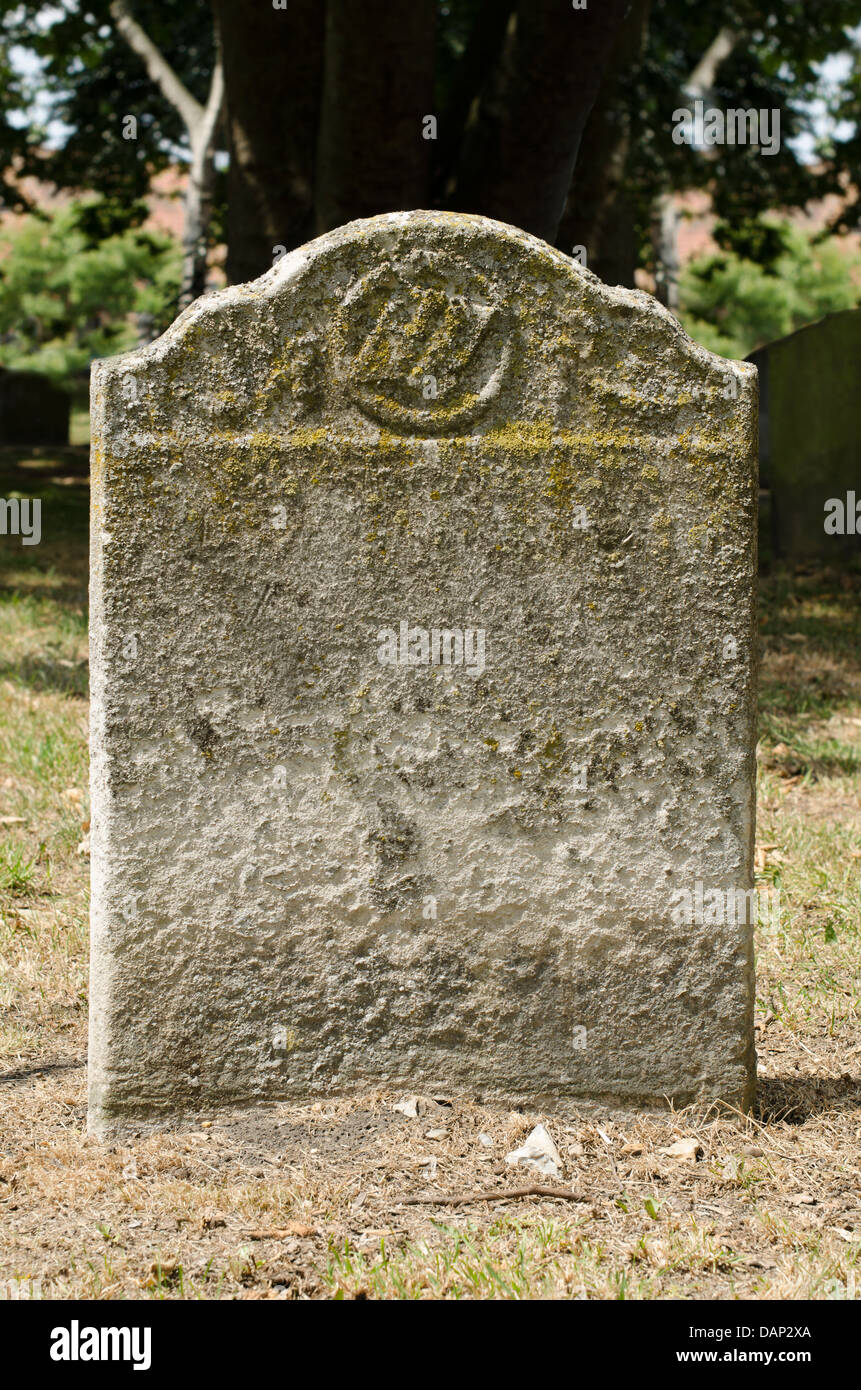Hi, Friend! Jen Glantz here. I’m a bestselling author, the first ever bridesmaid for hire and have been hired by hundreds of brides all over the world. Let’s talk about elegy poem examples.
According to LitCharts, elegies are defined by their subject matter and don’t have to follow any specific form in terms of meter, rhyme, or structure – they’re simply poems of serious reflection, especially ones mourning loss. I discovered this flexibility firsthand when I started exploring elegiac poetry after losing my grandmother last year. What struck me wasn’t just the raw emotion these poems contained, but how each poet found their own unique way to transform grief into something beautiful and lasting.
The elegy definition encompasses both the emotional weight of loss and the artistic skill required to express it meaningfully. The beauty of elegy lies in its universal appeal – whether you’re processing your own loss, supporting someone through grief, or simply appreciating the artistry of human emotion captured in verse, these 25 examples will guide you through the rich landscape of elegiac poetry from classical masterpieces to contemporary gems.
TL;DR
- Elegies transform personal grief into universal human understanding through authentic emotion and skilled craftsmanship
- The best elegy examples span from classical works like Milton’s “Lycidas” to contemporary pieces like Kenyon’s “The Blue Bowl”
- Evaluation criteria include emotional authenticity, literary merit, universal appeal, historical context, structure, and lasting impact
- Modern elegies break traditional forms while maintaining the genre’s core function of processing loss and finding meaning
- These 25 examples represent diverse approaches to mourning – from personal losses to cultural tragedies to universal themes
- Understanding different elegiac styles helps readers find poems that resonate with their own experiences of loss and healing
Quick Resources
Understanding What Makes a Great Elegy
Selecting powerful elegy examples requires understanding six key evaluation criteria that separate memorable poems from forgettable ones. These criteria help you identify elegies that will resonate emotionally while demonstrating literary excellence, ensuring you choose poems that serve their intended purpose whether for personal reflection, academic study, or sharing with others who are grieving.
Emotional authenticity serves as the foundation – look for poems where the poet’s grief feels genuine and relatable rather than performative or distant. Literary merit encompasses the sophisticated use of imagery, metaphor, symbolism, and language that elevates raw emotion into artistic expression.
Core Elements That Define Elegiac Excellence
An elegy’s power comes from its ability to express mournful, melancholic emotions while lamenting loss of someone or something precious. The definition of elegy encompasses both emotional tone and structural approach to grief, remembrance, and mortality reflection. Understanding these elements helps you recognize why certain elegies endure across generations while others fade from memory.
Understanding elegiac elements can enhance your appreciation for other forms of emotional expression, much like how crafting heartfelt wedding vows requires authentic emotion and meaningful structure to create lasting impact.
Turn elegiac emotion into a moving wedding speech with our AI Wedding Speech Generator.
The emotional tone must balance genuine sorrow with hope for consolation, moving readers through grief toward acceptance. Structural approaches can range from traditional forms with specific meters to free verse that follows natural speech patterns.
| Element | Classical Approach | Modern Approach | Purpose |
|---|---|---|---|
| Emotional Tone | Formal restraint with gradual revelation | Direct expression with conversational intimacy | Balance overwhelming grief with artistic control |
| Structure | Fixed forms (sonnets, pastoral conventions) | Free verse, prose poems, experimental forms | Provide framework for chaotic emotions |
| Imagery | Pastoral, mythological, religious symbols | Contemporary, domestic, urban imagery | Make abstract grief concrete and relatable |
| Language | Elevated diction, classical allusions | Natural speech, specific cultural references | Connect with intended audience authentically |
| Movement | Lament → meditation → consolation | Variable: circular, fragmented, or linear | Guide reader through emotional journey |
Essential Evaluation Criteria
Six fundamental criteria determine an elegy poem’s lasting impact and effectiveness. These standards help you assess whether a poem successfully transforms personal loss into shared human experience, demonstrating the technical skill and emotional depth that characterize great elegiac poetry.
Universal appeal ensures the poem speaks to shared human experiences of loss, making deeply personal grief accessible to diverse readers. Historical and cultural context provides crucial insight into the poem’s significance and helps explain its continued relevance across different eras.
Consider how Thomas Gray’s “Elegy Written in a Country Churchyard” meets all six criteria: it demonstrates emotional authenticity through its meditative tone on mortality, shows literary merit in its memorable quatrains and imagery, achieves universal appeal by focusing on common people rather than nobility, holds historical significance as a democratic vision in aristocratic times, employs masterful structure with its regular stanzas mirroring grave rows, and maintains lasting impact through phrases like “paths of glory lead but to the grave” that remain culturally resonant today.
Classical and Traditional Elegies (8 Examples)
Classical elegies established the foundational conventions of the genre, demonstrating how formal structures and traditional imagery can enhance emotional expression. These eight examples showcase the evolution of elegiac poetry from Anglo-Saxon origins through the Romantic period, each contributing unique approaches to processing grief and finding meaning in loss.
Traditional elegies often employ pastoral imagery and classical allusions to create distance that makes intense grief more bearable to express and experience. Formal constraints like specific rhyme schemes and meters provide structure that contains overwhelming emotions while creating memorable, quotable passages.
Elegy poems from this era demonstrate how poets worked within established conventions while finding personal voices for their grief.
1. “Lycidas” by John Milton (1637)
Milton’s pastoral elegy mourns his friend Edward King’s drowning while questioning divine justice and early death’s meaning. The poem follows classical conventions but challenges traditional religious comfort, making it both a personal lament and philosophical meditation on mortality’s randomness.
The pastoral framework allows Milton to explore religious doubt indirectly through shepherding imagery and classical mythology. Complex allegory transforms personal grief into universal questions about God’s justice and the value of artistic achievement.
2. “Elegy Written in a Country Churchyard” by Thomas Gray (1751)
Gray’s meditation on mortality reflects on common people’s lives buried in a rural cemetery, democratizing death by showing how it affects all social classes equally. The poem’s accessible language and memorable phrases made it one of English literature’s most quoted elegies.
Regular quatrains provide structural elegance that mirrors the orderly rows of graves while creating a contemplative rhythm. The democratic vision challenges 18th-century class distinctions by emphasizing death’s universal nature.
3. “When Lilacs Last in the Dooryard Bloom’d” by Walt Whitman (1865)
Whitman’s tribute to Abraham Lincoln combines personal grief with national mourning, using lilacs, a star, and a hermit thrush as central symbols. The 206-line elegy transforms individual loss into collective healing through expansive free verse and biblical-style catalogs of American landscapes.
Three central symbols create a complex symbolic system where lilacs represent love, the star symbolizes Lincoln, and the thrush embodies poetic song. Free verse technique allows for expansive catalogs that enumerate American diversity while maintaining elegiac solemnity.
4. “Adonais” by Percy Bysshe Shelley (1821)
Shelley’s elaborate elegy for John Keats transforms personal loss into a meditation on poetry’s immortal power. The poem argues that true poets achieve immortality through their art, even when their physical lives end prematurely.
Spenserian stanzas provide formal complexity that matches the poem’s philosophical ambitions about art and immortality. The transformation from lament to celebration demonstrates the elegiac movement from grief toward transcendent consolation.
5. “In Memoriam A.H.H.” by Alfred, Lord Tennyson (1849)
Tennyson’s 131-section elegy chronicles his 17-year journey through grief following Arthur Henry Hallam’s sudden death. The extended sequence explores faith, doubt, and gradual healing while grappling with Victorian scientific discoveries that challenged religious certainty.
The ABBA rhyme scheme creates enclosed stanzas that mirror emotional containment while allowing for gradual development. The poem’s length permits detailed exploration of grief’s stages, from initial shock through doubt to eventual acceptance.
6. “Thyrsis” by Matthew Arnold (1866)
Arnold’s elegy for Arthur Hugh Clough uses pastoral imagery to explore lost friendship and changing times. The poem mourns personal loss and the broader cultural shifts that were transforming Victorian England.
Pastoral conventions provide continuity with classical tradition while addressing distinctly modern concerns about cultural change. The scholar-gypsy motif represents the tension between academic life and authentic experience that troubled Victorian intellectuals.
7. “Ave Atque Vale” by Algernon Charles Swinburne (1868)
Swinburne’s elegy for Charles Baudelaire demonstrates musical verse style while honoring a fellow poet across national boundaries. The Latin title (“Hail and Farewell”) signals the poem’s classical aspirations and international literary kinship.
Musical prosody showcases Swinburne’s signature style while creating appropriate solemnity for elegiac purposes. Classical learning and exotic imagery reflect Victorian England’s complex relationship with French literary decadence.
8. “The Wanderer” (Anglo-Saxon, 8th-10th century)
One of English literature’s earliest elegiac poems laments the loss of lord, hall, and companions in Anglo-Saxon warrior culture. The anonymous poem captures genuine anguish about community dissolution and temporal change through sophisticated alliterative verse.
Alliterative verse employs traditional Germanic poetic forms while incorporating Christian overlay that reflects cultural transition. The poem’s haunting questions about transience establish elegiac themes that continue resonating across centuries.
Modern and Contemporary Elegies (7 Examples)
Modern elegies broke free from traditional constraints while maintaining the genre’s essential function of processing loss and finding meaning. These seven examples demonstrate how 20th and 21st-century poets adapted elegiac conventions to address contemporary concerns, from world wars to personal relationships, using innovative forms and direct language.
Modern elegies often employ conversational tone and direct address that makes grief more immediate and accessible to contemporary readers. Free verse structures allow natural speech rhythms while maintaining elegiac solemnity through careful line breaks and imagery.
Elegy poem examples from this era show how poets found new ways to honor the dead while speaking to living audiences in familiar language.
9. “Funeral Blues” by W.H. Auden (1936)
Auden’s direct, conversational elegy gained widespread popularity through its raw expression of grief and hyperbolic demands that the world stop functioning. The poem’s accessibility and emotional honesty made it a cultural touchstone for expressing overwhelming loss.
Simple AABA rhyme scheme provides accessibility while the hyperbolic imagery creates perfect balance between genuine feeling and artistic expression. Cultural penetration through film demonstrates how effective elegies can transcend their original literary context.
10. “Do Not Go Gentle Into That Good Night” by Dylan Thomas (1951)
Though technically a villanelle, this poem functions as an elegy for Thomas’s dying father, urging resistance against death rather than peaceful acceptance. The challenging form reinforces the poem’s message about fighting mortality with all available strength.
The villanelle’s repetitive structure creates urgency through repeated refrains that build emotional intensity. The poem’s defiant stance represents a modern departure from traditional elegiac acceptance of death’s inevitability.
11. “The Death of the Ball Turret Gunner” by Randall Jarrell (1945)
This five-line war elegy captures the horror and waste of young death in mechanized combat. Jarrell’s military experience lends credibility to its stark portrayal of how modern warfare dehumanizes and destroys young lives.
Single sentence structure mirrors life’s brevity and violent interruption while creating maximum emotional impact through compression. The shocking final image of washing remains from aircraft creates an indelible impression of war’s dehumanizing effects.
12. “Daddy” by Sylvia Plath (1965)
Plath’s complex and controversial poem functions as an elegy for her father while exploring complicated grief and unresolved trauma. The poem uses nursery rhyme rhythms to convey adult psychological excavation of difficult family dynamics.
Repetitive, incantatory structure builds psychological intensity while nursery rhyme rhythms create disturbing contrast with traumatic content. The poem’s controversial nature ensures continued discussion about appropriate ways to process complicated family relationships.
13. “Elegy for Jane” by Theodore Roethke (1953)
Roethke’s tender elegy for a student who died in a riding accident explores the teacher-student relationship and questions about appropriate grief boundaries. The poem demonstrates how modern elegies can honor relationships that fall outside traditional family structures.
The complexity of mourning relationships outside traditional family bonds parallels the emotional nuances explored in maid of honor speeches, where speakers must navigate appropriate boundaries while expressing genuine affection.
Intimate domestic details create emotional resonance while raising questions about the propriety of a teacher’s grief for a student. Natural imagery connects the young woman’s death to seasonal cycles, providing some consolation through natural continuity.
14. “The Blue Bowl” by Jane Kenyon (1996)
Kenyon’s contemporary elegy for a beloved cat demonstrates how modern elegies can honor non-human subjects with equal dignity. The poem’s quiet restraint and precise language show that all meaningful relationships deserve elegiac treatment.
Free verse structure allows natural speech patterns while maintaining elegiac dignity through careful attention to line breaks and imagery. The poem’s treatment of pet loss validates grief that some might consider inappropriate or excessive.
When Jane Kenyon writes “I buried the cat with his bowl. / Belly-up / in the cool dirt,” she demonstrates how contemporary elegy poem examples can find profound meaning in seemingly simple moments. The specific detail of the blue bowl transforms a potentially sentimental subject into something universal about love, loss, and the objects that hold our memories. This approach shows modern poets how everyday imagery can carry the same emotional weight as classical mythology or religious symbolism.
Express deep, personal emotion with our AI Love Letter Generator (Free).
15. “One Art” by Elizabeth Bishop (1976)
Structured as a villanelle, Bishop’s elegy explores the art of losing and builds to a devastating conclusion about human loss. The poem’s controlled form contrasts with its emotional revelation, creating powerful tension between surface calm and underlying devastation.
The villanelle form provides formal containment that mirrors the speaker’s attempt to control overwhelming emotion through practiced detachment. The progression from small losses to devastating human loss demonstrates how grief accumulates and intensifies over time.
Cultural and Social Elegies (5 Examples)
Cultural elegies mourn collective losses – the death of ideals, civilizations, dreams, and social progress. These five examples demonstrate how poets expand elegiac scope beyond personal grief to address historical tragedies, social injustices, and cultural decline, making private mourning techniques serve public purposes.
Cultural elegies often employ symbolic imagery that represents broader social conditions while maintaining personal emotional connection. These poems serve as historical documents that capture specific moments of cultural crisis while speaking to universal experiences of collective loss.
Elegy poetry in this category transforms individual mourning techniques into tools for processing shared trauma and social disappointment.
| Type of Cultural Loss | Example Poem | Poetic Technique | Historical Context |
|---|---|---|---|
| National Idealism | “For the Union Dead” (Lowell) | Juxtaposition of past/present | Civil Rights era disillusionment |
| Global Peace | “September 1, 1939” (Auden) | Intimate setting for global catastrophe | WWII outbreak |
| Western Civilization | “The Waste Land” (Eliot) | Fragmented voices and languages | Post-WWI cultural crisis |
| Social Dreams | “Harlem” (Hughes) | Extended metaphor building tension | Civil Rights movement |
| Human Rights | “The Colonel” (Forché) | Prose poem testimonial style | El Salvador political violence |
16. “For the Union Dead” by Robert Lowell (1964)
Lowell’s elegy mourns Civil War soldiers while lamenting the decline of American idealism and civic virtue. Written during the Civil Rights era, the poem juxtaposes past heroism with present moral failures, creating a complex meditation on American values.
Free verse meditation allows natural thought progression while maintaining elegiac tone through careful imagery and line breaks. The juxtaposition of past heroism with present decay creates powerful commentary on American moral decline.
17. “September 1, 1939” by W.H. Auden (1939)
Auden’s elegy for the end of peace as World War II begins reflects on collective loss and historical tragedy. The poem captures the moment when individual lives become subject to vast historical forces beyond personal control.
The poem’s setting in a New York bar creates intimate scale for contemplating global catastrophe. Auden’s later disavowal of the poem demonstrates how elegies can become problematic when historical events exceed poetic comprehension.
18. “The Waste Land” by T.S. Eliot (1922)
Eliot’s 434-line modernist epic functions as a cultural elegy through five sections that weave together multiple languages, literary allusions, and fragmented voices. The poem mourns Western civilization’s spiritual barrenness following World War I’s devastation.
Complex structure mirrors fractured modern consciousness while employing techniques from stream-of-consciousness to musical composition. Multiple voices and languages create a collage effect that represents cultural fragmentation and loss of shared meaning.
19. “Harlem” by Langston Hughes (1951)
Hughes’s elegy for deferred dreams mourns lost opportunities in African American experience. The poem’s building interrogative structure creates mounting tension that culminates in an explosive image of frustrated aspirations.
Extended metaphor and rhetorical questioning build psychological pressure that mirrors the social tensions Hughes addresses. The explosive final image became a rallying cry for civil rights movement, demonstrating how elegies can inspire political action.
20. “The Colonel” by Carolyn Forché (1978)
Forché’s prose poem serves as an elegy for victims of political violence in El Salvador. The flat, reportorial tone creates devastating contrast with horrific content, functioning as testimonial literature that bears witness to state terror.
Prose poem form mirrors documentary reportage while maintaining poetic intensity through careful attention to rhythm and imagery. The poem’s testimonial function demonstrates how elegies can serve as historical evidence and political protest.
Personal and Intimate Elegies (3 Examples)
Personal elegies focus on intimate relationships and private grief, demonstrating how individual loss can achieve universal resonance through honest emotional expression. These three examples show different approaches to mourning family members, from childhood tragedy to maternal loss to the nature of grief itself.
The intimate nature of personal elegies shares emotional territory with heartfelt wedding speeches, where speakers must balance personal memories with universal themes that resonate with diverse audiences.
Honor your loved one through words—try our Maid of Honor Speech Generator.
Intimate elegies often employ domestic details and specific memories that create emotional authenticity while allowing readers to connect through their own experiences. The challenge lies in making private grief accessible without sacrificing the specificity that gives these poems their power.
Elegy poem examples in this category demonstrate how poets transform deeply personal loss into shared human understanding.
21. “Mid-Term Break” by Seamus Heaney (1966)
Heaney’s devastating elegy for his four-year-old brother demonstrates how restraint can amplify emotional impact. The poem’s final image creates heartbreaking connection between the child’s age and coffin size, achieving maximum effect through understatement.
The poem’s restraint and focus on external details allows readers to feel the full weight of loss without overwhelming emotional manipulation. The final line’s mathematical precision creates devastating emotional impact through its matter-of-fact presentation of tragedy.
22. “Clearances” by Seamus Heaney (1987)
Heaney’s sequence of elegies for his mother explores memory, language, and the mother-son relationship through intimate domestic scenes. The sonnet sequence provides formal containment for overwhelming emotion while allowing complex development of grief and memory.
Sonnet sequence structure permits detailed exploration of the mother-son relationship while providing formal boundaries for intense emotion. Domestic details like potato peeling create universal resonance through specific cultural and personal memories.
In “Clearances,” Heaney writes about peeling potatoes with his mother: “Never closer the whole rest of our lives.” This simple domestic moment becomes profound through the elegy’s context – showing how ordinary activities gain sacred meaning when viewed through the lens of loss. The technique demonstrates how personal elegies can find the eternal within the everyday, making private grief accessible to readers who may have never peeled potatoes with an Irish mother but understand the intimacy of shared domestic rituals.
23. “Grief” by Elizabeth Barrett Browning (1844)
Browning’s personal elegy explores grief’s nature itself rather than focusing on a specific loss. The poem examines how grief changes over time and questions common assumptions about mourning’s emotional intensity and duration.
The poem’s focus on grief as a subject rather than a specific loss allows for philosophical meditation on mourning’s universal characteristics. Browning’s analysis of grief’s passionless quality challenges romantic notions about mourning’s emotional intensity.
Nature and Universal Elegies (2 Examples)
Nature elegies expand mourning beyond human loss to encompass seasonal change, temporal passage, and existential questions about meaning and mortality. These two examples demonstrate how natural imagery can express universal themes about transience and the human search for significance in an potentially meaningless universe.
Natural imagery provides objective correlatives for subjective emotional states while connecting human mortality to larger cosmic cycles. These elegies often achieve consolation through integration with natural processes rather than religious or philosophical transcendence.
Elegy poems in this category use the natural world as both subject and metaphor for human experience of loss and renewal.
24. “To Autumn” by John Keats (1819)
While celebrating autumn’s beauty, Keats’s ode functions as an elegy for seasonal passage and time itself. The poem’s three stanzas mirror autumn’s progression from abundance through maturity to decline, creating acceptance of natural cycles that includes human mortality.
Three stanzas mirror autumn’s progression while lush imagery creates aesthetic pleasure that compensates for temporal loss. The poem’s acceptance of seasonal change provides a model for accepting human mortality as part of natural processes.
25. “The Snow Man” by Wallace Stevens (1921)
Stevens’s modernist elegy contemplates nothingness and humanity’s need to find meaning in a potentially meaningless universe. The compressed meditation achieves philosophical impact through its paradoxical conclusion about perceiving “nothing that is not there.”
Single sentence structure creates unified philosophical argument while the winter imagery provides objective correlative for existential emptiness. The poem’s paradoxical conclusion about nothingness creates lasting intellectual puzzlement that continues engaging readers.
How to Evaluate Elegy Quality and Impact
Understanding how these 25 examples of elegy succeed across different evaluation criteria helps you recognize what makes elegies effective and memorable. Each poem demonstrates different approaches to achieving emotional authenticity, literary merit, universal appeal, historical significance, structural innovation, and lasting impact.
Traditional elegies often build authenticity through extended exploration of grief’s stages while modern examples achieve it through directness and specificity. The most successful elegies combine technical skill with genuine emotion, creating works that continue comforting and inspiring readers facing their own losses.
| Evaluation Criteria | Questions to Ask | Strong Example | Weak Indicators |
|---|---|---|---|
| Emotional Authenticity | Does the grief feel genuine or performative? | Heaney’s restraint in “Mid-Term Break” | Excessive sentimentality or detachment |
| Literary Merit | Do technical choices enhance emotional impact? | Bishop’s villanelle form containing chaos | Technical display without emotional purpose |
| Universal Appeal | Can diverse readers connect with specific loss? | Gray’s democratic vision of mortality | Overly private references or elitist assumptions |
| Historical Context | Does the poem capture its moment meaningfully? | Hughes’s “Harlem” documenting social injustice | Dated language without enduring relevance |
| Structural Innovation | Do formal choices serve elegiac purposes? | Stevens’s single sentence philosophical unity | Innovation for its own sake |
| Lasting Impact | Does the poem continue offering comfort/insight? | Auden’s “Funeral Blues” cultural penetration | Temporary relevance or narrow appeal |
Emotional Authenticity Across Different Eras
Emotional authenticity manifests differently across historical periods, with traditional elegies building credibility through formal mastery and extended meditation while contemporary examples achieve it through conversational directness and specific detail. Understanding these different approaches helps you appreciate how cultural contexts shape authentic emotional expression.
Classical elegies demonstrate authenticity through adherence to established conventions that signal serious artistic intent and emotional investment. Modern elegies often achieve authenticity through breaking conventions and employing natural speech patterns that suggest spontaneous emotional expression.
Literary Merit and Technical Achievement
Literary merit appears in both traditional formal mastery and innovative structural approaches that serve elegiac purposes. The best elegies demonstrate how technical skill enhances rather than obscures emotional expression, using literary devices to deepen rather than decorate their emotional content.
Classical examples showcase technical mastery of traditional forms while contemporary elegies demonstrate innovation in language and structure. Both approaches achieve excellence when technical choices serve emotional purposes rather than displaying virtuosity for its own sake.
Universal Appeal and Accessibility
The most powerful elegies connect personal loss to shared human experiences through carefully chosen details and emotions that transcend specific circumstances. These poems succeed when readers can recognize their own grief experiences within the poet’s particular situation, creating bridges between individual suffering and collective understanding.
Gray’s churchyard meditation and Auden’s “Funeral Blues” achieve connection through different approaches – one philosophical, one immediate and visceral. Successful universal appeal requires balancing specificity with broader emotional truths that allow diverse readers to find personal relevance.
Historical Context and Cultural Significance
Understanding each poem’s historical moment enhances appreciation while revealing how elegiac responses to loss reflect broader cultural values and concerns. War elegies capture specific conflicts while addressing universal trauma, religious elegies reflect theological debates of their eras, and social elegies document particular injustices with lasting relevance.
War elegies reflect their specific conflicts while speaking to universal experiences of violence and premature death. Cultural elegies document particular historical injustices while maintaining relevance for contemporary social struggles.
Structural Innovation and Form
Traditional elegies employ formal constraints that enhance emotional impact through containment and memorability, while free verse elegies use natural speech rhythms to create intimacy and immediacy. Both approaches succeed when structural choices serve the poem’s emotional and thematic purposes rather than existing as mere technical display.
Formal constraints create emotional containment that mirrors the speaker’s attempt to manage overwhelming grief. Free verse structures allow meditative thought progression while maintaining elegiac solemnity through imagery and pacing.
Lasting Impact and Memorability
Memorable elegies combine technical excellence with genuine emotional resonance, creating works that continue offering comfort and insight across generations. Their impact extends beyond literary circles into popular culture, therapeutic applications, and personal grief processing, demonstrating poetry’s practical value in human experience.
The most enduring elegies feature quotable passages that capture complex emotions in memorable language. Cultural penetration through various media demonstrates how effective elegies transcend their original literary contexts to serve broader human needs.
Why These Examples Matter in 2025
Contemporary readers benefit from understanding how elegies translate to digital age mourning practices, serve therapeutic functions, and provide educational value across different learning contexts. These 25 elegy poem examples remain relevant because they demonstrate timeless approaches to processing loss while offering models for contemporary grief expression.
Just as elegies help process loss and find meaning in difficult times, understanding wedding planning stress can help couples navigate emotional overwhelm during life’s significant transitions.
Digital age relevance includes how elegies inform social media mourning practices and online memorial creation. Therapeutic value encompasses both reading elegies for comfort and writing them as grief processing tools.
Examples of elegy poems continue serving practical purposes in our interconnected world, where grief often requires both private processing and public expression.
Contemporary Applications and Relevance
Modern applications of elegiac poetry extend beyond literary appreciation to include therapeutic writing, educational tools, performance opportunities, and digital memorial practices. Understanding these applications helps you recognize how classical forms continue serving contemporary needs for processing and expressing grief.
Educational applications vary based on learning objectives, from introducing poetic forms to exploring historical contexts to processing personal experiences. Performance potential differs among examples, with some working effectively when read aloud while others function better as private reading experiences.
Professional Support for Life’s Meaningful Moments
Just as elegies provide comfort and understanding during difficult times, professional services can offer expert guidance during life’s overwhelming but beautiful moments. Whether you’re processing loss or celebrating new beginnings, having someone who understands the emotional complexity of significant life events makes these experiences more manageable and meaningful.
The same way elegies transform overwhelming grief into meaningful art, professional wedding support can transform wedding planning stress into joyful celebration through expert guidance and emotional support.
Create a heartfelt tribute—use the Best Man Speech Generator.
The authenticity that makes elegies powerful parallels the genuine care that effective professional support provides during emotionally intense periods. Both elegies and professional guidance recognize that life’s most significant moments deserve thoughtful, compassionate attention from those who understand their importance.
Final Thoughts
These 25 elegy examples demonstrate poetry’s remarkable ability to transform private grief into shared human understanding. From Milton’s classical “Lycidas” to Kenyon’s contemporary “The Blue Bowl,” each poem offers a unique approach to processing loss while maintaining the genre’s essential function: helping us find meaning and consolation in the face of mortality.
The diversity of these examples – spanning centuries, cultures, and forms – proves that there’s no single “correct” way to mourn or remember. Whether you’re drawn to traditional formal structures or prefer modern free verse approaches, whether you’re processing personal loss or contemplating broader cultural changes, these elegies provide models for honest emotional expression and artistic achievement.
Just as these elegies demonstrate the power of authentic expression during loss, crafting meaningful wedding speeches requires the same commitment to genuine emotion and careful attention to language that makes these poems endure.
Need real-time support? Try our Free 24/7 Wedding Hotline.
What makes these poems endure isn’t just their technical skill or historical importance, but their continued ability to offer comfort and understanding to readers facing their own losses. They remind us that grief, while intensely personal, is also universally human – and that through careful attention to language and emotion, we can transform our darkest moments into sources of beauty and connection.
The enduring power of these elegies lies in their ability to balance specific personal details with universal emotional truths that transcend their original contexts. Contemporary readers can apply the emotional honesty and structural approaches found in these examples to their own writing and grief processing, whether through formal poetry or other creative expressions.
An elegy poet succeeds when they create bridges between individual suffering and collective understanding, transforming personal loss into shared wisdom. Each example of elegy in this collection demonstrates different ways to achieve this transformation, offering readers multiple models for processing their own experiences of loss and renewal.
Advanced Analysis Techniques
Sophisticated elegy analysis requires examining how poets balance competing demands – honoring the deceased while serving the living, maintaining artistic integrity while expressing raw emotion, following traditional expectations while innovating for contemporary relevance. These tensions create the dynamic energy that distinguishes great elegy poem works from merely competent ones.
The tension between public and private grief appears in poems where personal mourning serves national healing purposes. Innovation within tradition shows in how modern poets use classical forms while addressing contemporary emotional experiences.
Elegies that successfully navigate these competing pressures often become the most memorable and influential examples of the genre.
Comparative Analysis Across Categories
Comparing elegies across different categories reveals how poets adapt elegiac conventions to serve various purposes – personal healing, social commentary, philosophical meditation, or artistic experimentation. These comparisons illuminate the genre’s flexibility while highlighting consistent elements that define elegiac identity.
The way elegies adapt to serve different purposes mirrors how wedding speeches can be tailored to different relationships and occasions while maintaining their core function of celebrating love and connection.
Personal elegies achieve power through restraint and specific detail, while cultural elegies employ fragmentation and allusion. The progression from classical pastoral imagery to contemporary urban settings reflects changing cultural contexts while maintaining elegiac functions.
Elegy poem variations demonstrate remarkable adaptability across time periods and cultural contexts.
Contemporary Relevance and Future Directions
Modern elegiac poetry continues evolving to address contemporary forms of loss – environmental destruction, digital relationships, global conflicts, and pandemic grief. Understanding traditional elegiac strategies provides foundation for recognizing and creating new forms that serve current emotional and cultural needs.
Digital age applications include how elegiac techniques inform social media mourning rituals and online memorial practices. Environmental elegies represent emerging subgenres that mourn ecological loss while drawing on traditional nature imagery and seasonal metaphors.
Elegies will continue adapting to address new forms of collective and individual trauma while maintaining their essential function of processing loss.
Practical Applications for Readers
These elegy examples serve multiple practical purposes beyond literary appreciation – therapeutic reading during grief, models for personal writing, educational tools for understanding poetic techniques, and cultural bridges for processing collective traumas. Knowing how to apply these poems enhances their value in daily life.
Therapeutic applications include matching specific elegies to different stages of grief, from initial shock through anger to eventual acceptance. Educational uses range from teaching poetic devices to exploring historical contexts to facilitating discussions about mortality and meaning.
Elegy poem selections can be customized based on individual needs and circumstances, making these works practical tools for emotional healing.
Writing Your Own Elegies
Understanding these 25 examples provides foundation for creating personal elegies that honor your own losses while drawing on proven techniques for emotional expression and artistic achievement. The key lies in finding authentic voice while learning from successful models without mere imitation.
Creating personal elegies requires the same balance of authenticity and structure needed when writing wedding vows, where genuine emotion must be shaped into meaningful, memorable language.
Beginning writers benefit from studying how different poets handle similar themes, comparing various approaches to premature death or loss of relationships. Advanced techniques include experimenting with various forms and structures while maintaining focus on genuine emotional content rather than technical display.
Elegy poem composition becomes more accessible when writers understand the range of successful approaches available to them.
Sharing Elegies with Others
Elegies serve important social functions in helping communities process shared losses and supporting individuals through private grief. Understanding which poems work best in different contexts – funeral services, memorial events, personal comfort, or educational settings – maximizes their healing potential.
Public readings require poems with clear emotional trajectories and accessible language, making certain works more suitable than others for communal settings. Private sharing benefits from matching poem selection to the griever’s relationship with the deceased and their stage in the mourning process.
Elegies function most effectively when carefully matched to their intended audience and purpose.
Example of elegiac sharing might involve selecting Auden’s “Funeral Blues” for its direct emotional appeal in public settings, while reserving more complex philosophical works for private reflection or academic discussion.
1-800-BRIDESMAID
The Newlywed
Card Game
something extra to love
Read the weekly newsletter from Bridesmaid for Hire, 1-800-Bridesmaid, to hear about real stories, from strangers, who need advice on love, life, friendship, and so much more.
Looking for the perfect wedding gift for someone you adore? Grab The Newlywed Card Game. It's a fun and interactive game they can play on their honeymoon or future date nights.





